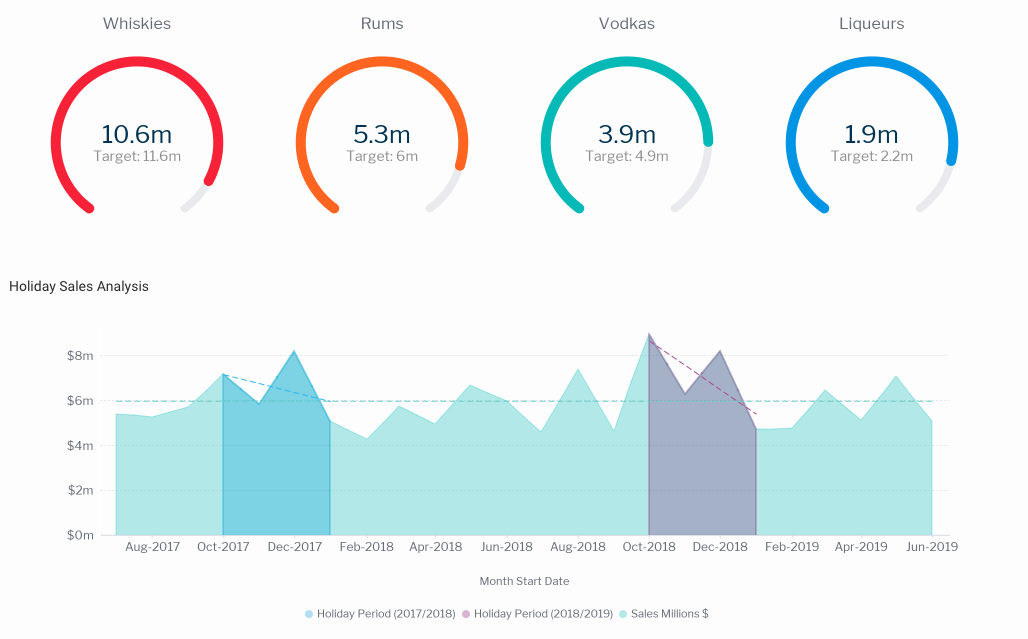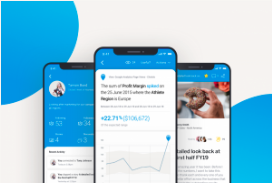
How to treasure hunt business opportunities in your data with automated analytics
Then there’s Forrest Fenn’s treasure (he’s still alive today). Fenn has buried his Pompeiian artifacts and other treasures worth approximately $2 million in the mountains north of Santa Fe, New Mexico. He’s even written a poem of clues and a book telling of its whereabouts in cryptic terms and whoever finds the treasure keeps it. Thousands of people have gone on the hunt for it to make their fortune.
But what if I told you that there was treasure hidden very much closer to you? Treasure that sits in your business’ data...Stay with me on this. It may not be gold bullions, but it could help you generate real revenue.
Unfortunately, I don’t have a poem to help you out.
Fortunately, there is a treasure map - and one you can take with you wherever you go. I'm talking about a mobile BI tool delivering analytics in a way you've never seen before. Keep reading...

Your KPIs are tracking well, but why are they?
Dashboards are BI bread and butter. You monitor everything with dashboards - all your KPIs with different ones on different dashboards for each department and role.
The problem is that, although dashboards are great for monitoring, they often conceal important changes happening in your data because the data is aggregated. And those changes are treasured insights into your business. If you know what changed and why, you can act fast to remedy or build on that change.
But because these changes can happen at any time, simply getting a notification on your desktop isn’t enough. You need to be able to monitor these changes from wherever you are so you can make fast business decisions as soon as changes arise. (No good having a treasure map you can only look at when you’re at your desk!)

There’s a problem, though. Trying to perform data discovery on a mobile device with current mobile BI tools in order to keep on top of the business while on the move is simply difficult. The tiny touch screen isn’t built for displaying dashboards and, when you’re on the move, data discovery isn’t really what you want to be doing anyway.
Traditional mobile business intelligence apps just replicate (badly) the desktop experience. There’s a treasure trove of insights buried in the data but you don’t have the time, desire, or best device for doing data discovery when commuting, travelling for meetings, or waiting for your coffee.
If you’re a manufacturing company, for example, you could look at your KPIs and see your overall production output may be being met. But would you know that there was a 5% drop in your production in Germany that coincided with a 3% increase in production in Japan and a 2% increase in the USA? Or, on a more granular level, did you know that a contribution to the cause of the decrease in production in Germany was the faulty batch of materials delivered to the plant a week ago? That’s not something your dashboard would have flagged.
In this day and age of super-fast-paced work, you need to be notified of these changes instantly so that, even when you’re on the move, you can react to the change and turn to your team to take instant action. You need to maximise the upward trend in production and prevent any further decline of production in your other plant. But the traditional business intelligence software made available to you in the office and, more crucially, via your mobile phone, isn’t advancing your team’s ability to react to data changes on the move.
So how do you surface these data changes on a mobile BI tool?
Enter Machine Learning
Machine learning (ML) algorithms are significantly advanced enough now to search your data for statistically significant changes and surface them in a notification. They should also be able to tailor notifications of data changes to your user role so you only get notifications of data changes that are relevant to you.
Traditional alerts triggered by pre-defined thresholds aren’t enough in this competitive data landscape. You need automated data discovery to do the digging for you while you’re away from your desktop so you never miss a beat.

These notifications should then be able to be shared and collaborated on so you can go from change notification, to insight, to business decision, and then action in minutes or a couple of hours, not days. The new wave of augmented analytics is automating the laborious manual data discovery tasks so you can make business decisions at lightning speed.
Mobile business intelligence apps need to crawl out of the dark ages and catch up with how we really use our mobile devices - we use them for instant, snackable information that can be shared and actioned fast. (See my pot noodle comparison in the last blog post on mobile business intelligence apps.)
When you can see the hidden changes you can act on them fast. And when you can act fast to make decisions that turn business outputs around, you have a new business superpower - and that’s where the treasure of increased revenue lies. Yellowfin Signals, which uses algorithms to surface changes in your data, is your treasure map and the notifications mark the spot.
But what about uncovering the source of an issue or success that isn’t in the data?
Enter, Data Storytelling
Take the earlier example of the faulty material batch delivered to the German manufacturing plant. The fact that the business had switched suppliers of the raw materials, which affected the material quality, isn’t a data point in your system. So you would never be notified of that cause.
That’s where data storytelling comes in.
Context to the data, like the change in material supplier, would only be known by certain people in the organization - such as the supply team. When the production team noticed the drop in quality, they would have notified the supply team. But the wider organization needs to know why the output changed, which affected sales figures. This is a perfect opportunity for a data story to tell the organization what happened and how it can be fixed. Most BI and analytics platforms don’t give that capability. And if they do, it’s a mere annotation on a report, which, once again, is very difficult to see and track on a mobile device - you aren’t notified of that annotation.
But what if everyone in the business could share data stories? What if they could write up a blog-like story with the full context and embed the reports right next to the written context?
That’s what Yellowfin Stories allows. And those stories can be shared with individuals, select groups, or the whole business. Plus, the embedded reports maintain their data governance so only those with the correct permissions can see the data. Totally secure.

And, like you read the news on your mobile device, data stories can easily be read on the go on your phone - on the new mobile business intelligence app. You can stay on top of the business on the commute, travelling to meetings, and in the coffee queue.
Time for an update to the mobile BI experience
Because the mobile phone is so crucial to our working lives today, we desperately need to be able to uncover the treasure of change wherever we are. We need to be freed up to act instantly and collaborate in real time.
It’s time you were equipped with the treasure map in your business - the combined power of Yellowfin Signals and Yellowfin Stories - so you can uncover hidden gold in your data.
Your guide to mobile-focused BI: Using automation to cut through the clutter
Download the paper to uncover the all-new mobile BI opportunity that delivers a true data culture and insights that can be acted on instantly.